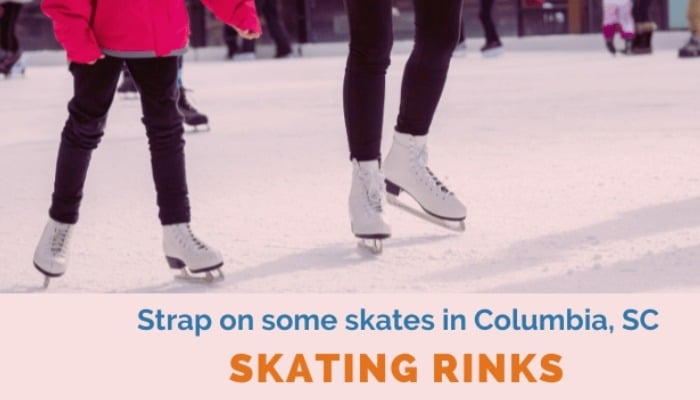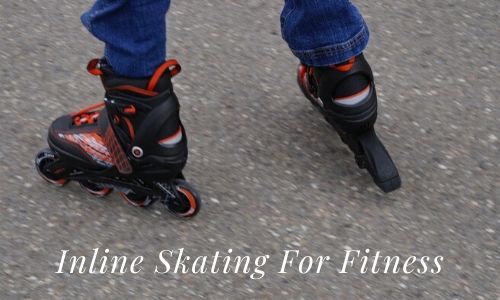How to Get Better at Inline Skating [Steps To Follow]
( If you purchase through our sponsored links, we may receive a small commission at no extra cost to you )
A Cognitive Approach On How To Get Better At Inline Skating
Watching the people of all ages gliding through City Park, Town Hall, and Rail path is really amazing. How do they maneuver? Is it a work of art? Or, something else. A few utter, “Science for sure”.
Inline skating is an art and science as well. To put it simply, it is all about keeping the body balance thoroughly. But, how to get better at inline skating-this is a burning question among the skate-lovers.
Think of a toddler trying to march at the very outset. The opening stance was not as bright as expected. In addition, the more an infant practices the more it becomes easier for him to cope.
Getting the right kind of balance is the impediment in culturing inline skating. Initially, to be a better inline skater it is mandatory to learn how to develop balance. But before that, make sure to carry the right kind of gears: well designed skates, helmet, elbow pads, wrist guards, knee pads and finally journey begins! Let’s look at some.

| Key Point | Description | Additional Info |
|---|---|---|
| 1. Balance is Crucial | Inline skating requires good balance. Practice balancing on skates by starting on a soft surface and maintaining a low center of gravity. | Proper gear, including helmets and pads, is essential for safety. |
| 2. Begin with Small Steps | Start with small strides to get comfortable on skates. Take your time to build confidence before attempting more advanced moves. | Develop muscle memory by repeatedly practicing basic movements. |
| 3. Use Support Initially | Beginners can use supportive objects like railings or walls to steady themselves as they learn to balance and move on skates. | Gradually reduce dependence on support structures as you gain confidence. |
| 4. Master the Glide | Focus on gliding smoothly on one foot at a time. This technique forms the foundation for more advanced skating maneuvers. | Learning to glide gracefully takes time and practice. |
| 5. Practice on Inclines | Skating on gentle inclines can help improve your balance and control. Experiment with different terrains to build versatility. | Be cautious when skating downhill and practice braking techniques. |
| 6. Maintain Proper Posture | Keep your knees slightly bent, back straight, and eyes forward. Proper posture aids balance and reduces the risk of falls. | A stable stance enhances control and minimizes the risk of injury. |
| 7. Learn to Use Your Arms | Arm movements play a role in maintaining balance and stability. Use them for steering and as counterweights while skating. | Coordination between arms and legs is essential for smooth skating. |
| 8. Weight Distribution Matters | Distribute your weight evenly over both skates to maintain balance. Proper weight transfer is key to executing turns and maneuvers. | Pay attention to how your body weight shifts during different movements. |
| 9. Wind Considerations | Be mindful of wind conditions, as they can affect your stability. Skating into the wind may require additional effort and control. | Adjust your skating technique to accommodate varying wind speeds. |
| 10. Footwork and Leg Support | Strengthen your leg muscles for better control. Focus on foot placement and shifting your weight smoothly between legs. | Regular exercises to improve leg strength can enhance your skating skills. |
| 11. Consistent Practice | Improvement comes with practice. Dedicate time to skating regularly, gradually increasing the complexity of your maneuvers. | Set achievable goals and track your progress over time. |
Exclusive Inline Skating Tips :
Stand Staunch To The End
Primarily standing on skates could be pretty interesting. A grassy soft surface would be a nice one to start off with. Walking through this patch wearing skates provide enough grip so that you won’t begin to roll. This is the finest way to practice your balance before you get started.
Stand straight on your feet and about four to six inches apart. The arms should be slightly in front of you and the knees bent. The balls under your skates will take your weight keep the overall balance intact. Don’t try to stand straight with your knees and don’t keep your balance on your heels. Our body has diverse moving parts; so, in order to skate, we need to control.
Easier Than Moonwalking!
Start skating for the first time feels like you are skating with a slippery pair of shoes. By the way, skating is not “moonwalking” at least. Undoubtedly, it is easier than a moonwalk. Maintaining the bodyweight on the top of the skates is the key. Before get rolling, try to take some watchful small steps.
Hold Your Breath And Use Your Hands
Rolling for the first time would be nervy and adventurous as well. Like a toddler using a walker, a beginner needs support to hold on either side: rails on both hands or to have two walls of a narrow passage on both sides.
Glide, Not Slide
Learn how to glide through when you have mastered walking with your skates. Push your one foot forward and keep gliding. Rehearse the inline skating tricks. Here the trick is shifting weight on one foot to another and replicating the same thing again and again.
Keep The Tempo
After getting used to skating a bit, try to go for a slightly slant surface and roll on until you stop. Each time use an extra pace to persuade your sense of balance with movement. It requires rigorous training to be a better inline skater.
Stare In Front
The proper posture is the most important starting point to skate. To keep a perfect balance, try to remain your knees bent and use your hands to help yourself at the time of skating. While skating always look straight ahead and keep your head up. Be vigilant at all times. Practice until you feel comfortable with skates in maintaining balance consciously.
In inline skating, the combination of three to five larger wheels ensures that your wheelbase remains very short and agile, unlike the traditional long-frame and good speed skates. This promises to retain maneuverability.
Lean A Bit
I hear many people tired of asking, “how to get better at inline skating”. My sober request to them to see the skaters keenly before questioning. Lean, lean, lean! Try it and you will find your many problems fly away. Bend forward a little from your waist and put your arms out in front of you to master the balance. The arm movement is very much significant in skating. Keep in mind that every trick might take a couple of weeks for reaching perfection.
Carry The Body
Bodyweight is another measure to concern with. Being a better inline skater, it has been a tough call to make the chemistry between foot movement and body weight. This requires the inline skater to uphold a weight distribution. The straight lines belong to skate line up your body weight. Henceforth, proper weight distribution is an ideal way to meet up the balance. Here comes the idea of the center of gravity- aligning your body weight to attain balance.
Know How To Employ Wind Speed
Skating with the wind or against the wind keeps you busy computing the wind speed subconsciously. Here own force and wind speed will be the key factors to carry on smooth skating. Otherwise, you may find the rest of you down. In skating, the whole bunch of science tricks is functioning but still, all you need are the inline skating basics to follow.
Positioning Leg Support
The balance between two legs is must as you glide through. When you raise one foot forwards – push away with the other foot before you lose your balance. At the same time shift the weight from your back foot to your front. While you make an effort to retain your balance, you will definitely notice that the feet are moving apart. Be balanced and strive to bring the feet in a closer position. A growth chart will undoubtedly pose a positive note.
On the whole, be relaxed on skate because it is the greatest way to keep the focus on your technique and skate better in the coming days.
Let’s Enjoy a Video:
Wrapping Up
Inline skating, also known as rollerblading, can be expressed as an artistic performance. Skating is beneficial as well. On the other hand, the motion of rollerblading hinges on pure physics. Newton’s law of motion immensely depicts the sheer fundamental physics of inline skating. Though skating promotes a healthy, energetic outdoor lifestyle, it can be hazardous as well due to some risky movement. So, we need to deal it with caution.
Basically, the heart of skating ability is a balance. Losing balance results in missed tricks and falls. It will be a great help if you get the ability to keep balance by born. Nevertheless, practice after practice can improve your balance. Here the center of gravity plays a dynamic role. So, you need to adjust the center of gravity to maintain the balance.
Eventually, you will find your learning curve moving upright ahead. Bridging the gaps and you arrive at a position where you no longer need help in skating and find your body and skate moving in such a motion that you’re able to achieve balance sooner. Moreover, you will get the answer on how to get better at inline skating.
Certainly, you will not prevent yourself from going on inline skating guaranteed to give you an adrenaline rush.
You might be interested in ” How to Stop on Inline Skates”



![Best Roller Skating Rinks in Florida [Start Rolling]](https://sportstotry.com/wp-content/uploads/2023/10/best-roller-skating-rinks-in-florida.jpg)

![How to Dress for a Hockey Game? [Best Outfits to Wear]](https://sportstotry.com/wp-content/uploads/2021/12/how-to-dress-for-a-hockey-game.jpg)
![Are Roller Derby Skates Good for Outside? [Type of Wheels You Need]](https://sportstotry.com/wp-content/uploads/2022/02/Skate-Outside-with-Derby-Skates.jpg)
3 Comments